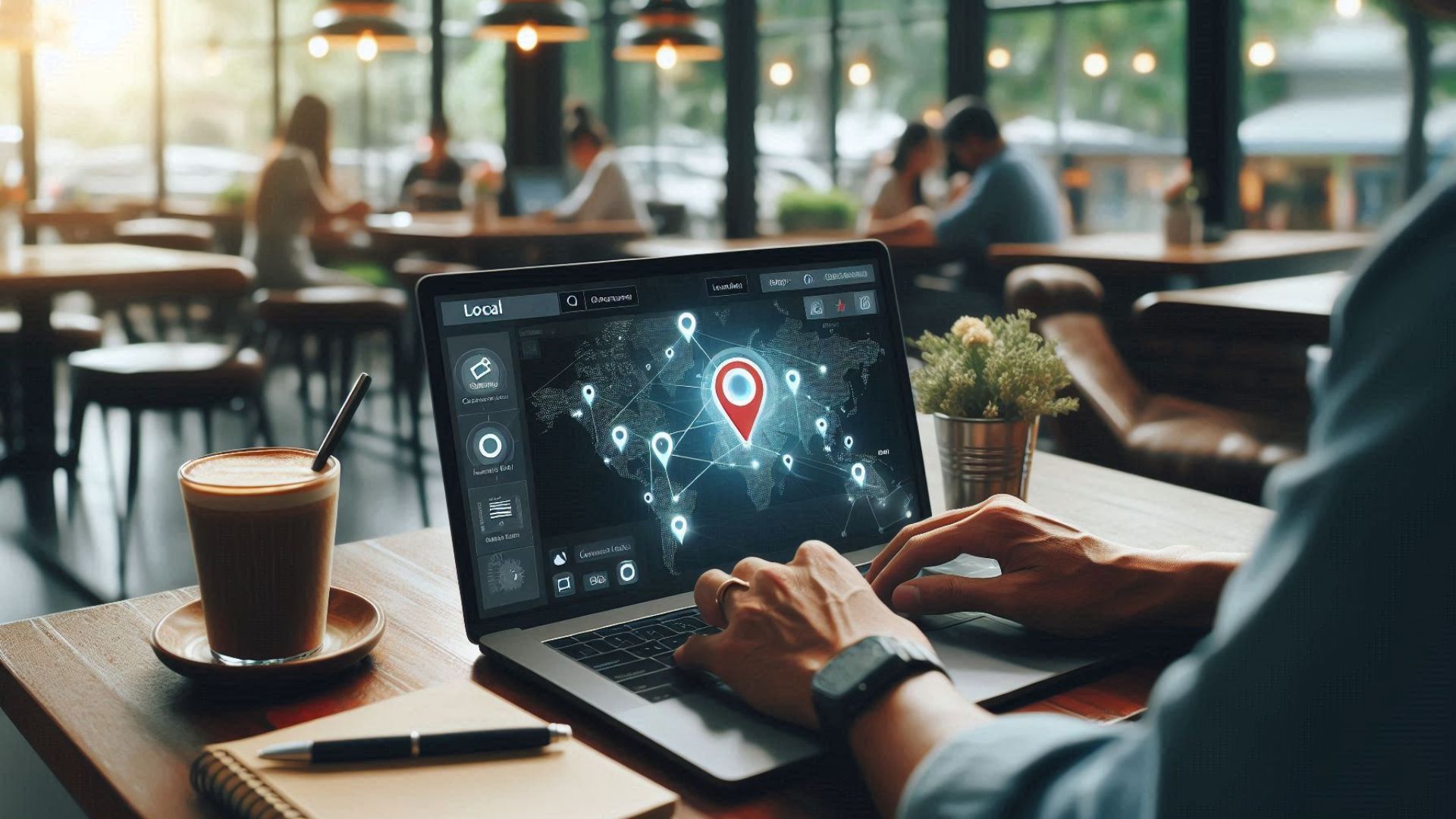What are the Key Ranking Factors for Local SEO?
If local businesses want to make the most money, they need to show up in Google’s local and organic search results. That’s why so many people study how Google’s algorithms work—to figure out the best ways to get noticed by the search engine and rank higher.
When we talk about local search ranking factors, we mean the things that can help a business show up in search results, whether it’s proven or just strongly believed. In this article, you’ll learn about the most important local search ranking factors and how to use them to boost the businesses you market.
Vital Context Before You Begin
For years, Moz ran the Local Search Ranking Factors (LSRF) survey, asking local SEO experts which factors seemed to have the biggest impact on search rankings. The results were helpful, but there was always an important disclaimer: there’s no single answer.

Google ranks businesses differently depending on the industry, location, platform, and even the device being used. Understanding these ranking factors—including things like Google’s RankBrain—is key to optimizing content and standing out in local search.
For example, if you’re doing SEO for a drive-thru restaurant, you might find that Google gives a lot of weight to “popular times.” But if you’re working with a tax accountant, that factor might not matter at all—things like backlinks from trusted sources could be far more important. In short, there’s no universal ranking formula. The best way to understand what matters most is to study how Google ranks businesses in a specific industry and location.
It’s also worth noting that different types of Google search results use different ranking factors. A business might rank well on Google Maps but not in the Local Finder, and ranking in local packs doesn’t always help with organic search results, which use a separate algorithm.
One last thing—research on local search ranking factors is based on experience, not inside knowledge. Google keeps its algorithms secret, so when SEO experts say a certain factor influences rankings, it’s an educated guess, not a guaranteed fact. That’s why these factors should be seen as insights rather than strict rules.
With that in mind, today you’ll learn what local search ranking factors are. But it’s up to you to figure out which ones matter most for the businesses you’re optimizing.
What is Local SEO?
Local SEO is all about helping businesses show up higher in local search results on Google and other search engines. It’s a way to make a website more visible to people searching for products or services in a specific area.

This is especially important for businesses like restaurants, shops, and service providers that rely on local customers. Unlike traditional SEO, which focuses on ranking globally or nationally, local SEO is all about a specific location.
Search engines consider factors like your Google Business Profile, online reviews, and local citations (mentions of your business on other websites) to decide how relevant and trustworthy your business is for local searches. The better you optimize these factors, the more likely you are to attract nearby customers!

Also Read: What is the Optimal Content Length for SEO?
The 8 Types of Local SEO Ranking Factors
Now, let’s break down the key factors that affect local rankings. These are usually grouped into eight major categories.

Google Business Profile (GBP) Factors
This includes everything on your Google Business Profile—except for reviews, which we’ll cover separately. If you’re not familiar with GBP, check out this detailed guide.
Three key GBP factors that can impact rankings are:
- Business Title – If your business name includes keywords people search for, it may rank higher. For example, if someone searches for “electric cars San Rafael,” a business called San Rafael Electric Car Mart might rank higher than Jim’s Auto Lot.
- Categories – You can select up to ten categories for your GBP. If someone is looking for an EV charging station, a business categorized as “Electric Vehicle Charging Station” will likely rank higher than one listed under “Gas Station.”
- Website URL – Linking to a strong, authoritative webpage can improve rankings. If an EV dealership links to its homepage (which has many backlinks), it may rank better than if it links to a lesser-known page.
Other elements—like photos, posts, Q&A, and messaging—may not directly impact rankings but can help convert visitors into customers. Research is ongoing to determine if these elements also influence rankings.
Review Factors
Reviews are customer feedback about their experience with a business. Google considers three types:
- Google Reviews – Reviews left directly on your Google Business Profile.
- Third-Party Reviews – Reviews on platforms like Yelp or Zagat.
- First-Party Reviews – Testimonials posted on your website.
Other review-related factors include:
- Recency – Are the reviews fresh, or are they outdated?
- Velocity – How often does the business get new reviews?
- Diversity – Are reviews spread across multiple platforms?
- Authority – Do reviews from Local Guides or industry experts carry more weight?
- Format – Are detailed text reviews more valuable than simple star ratings?
On-Page SEO Factors
These are website elements that help your business rank locally and organically. If SEO is new to you, check out Moz’s Beginner’s Guide to SEO.
Key ranking factors include:
- Domain Authority (DA) – A score predicting how well a website ranks. Higher DA means better rankings.
- Page Authority (PA) – Similar to DA but applies to individual pages. A GBP linking to a high-PA page will likely rank better.
- NAP Consistency – Your business Name, Address, and Phone Number (NAP) should be clearly displayed and match your GBP.
- Optimization – Your website should include relevant keywords. An EV dealer with a well-optimized “Electric Vehicle Prices” page will likely outrank competitors without one.
- Content Quality – Well-written, error-free, authoritative content ranks higher.
- Technical Factors – Ensure your site is mobile-friendly, secure, and free of malware. Google must be able to crawl and index your pages.

Also Read: How does Social Media Impact Off‑Page SEO?
Citation Factors
Citations are online mentions of your business’s NAP. They come in two types:
- Structured Citations – Business listings on sites like Yelp, Nextdoor, and TripAdvisor.
- Unstructured Citations – Mentions in blog posts, news articles, or non-directory websites.
Google considers factors like:
- Accuracy – Is your NAP consistent across platforms?
- Distribution – How many sites mention your business?
- Quality – Are these sites reputable?
- Relevance – Are they industry-specific or local directories?
Learn more about citations in this local search guide.
Link Factors
Like citations, links come in two types:
- Internal Links – Links between pages on your site (e.g., an EV charging rates page linking to a station locations page).
- Inbound Links – Links from other websites to yours (e.g., a news article linking to your EV charging station).
Ranking factors include:
- Domain Authority – A backlink from a high-authority site is more valuable than one from a low-quality site.
- Page Authority – The strength of the specific page linking to you matters.
- Quantity – More backlinks generally help, but quality matters more.
- Relevance – Are the linking sites related to your business?
- Diversity – Are backlinks from multiple sources or just a few?
- Anchor Text – What words are used in the link? (e.g., “EV Charging Station in San Francisco” vs. “Click here”)
Learn more about link building in this Moz guide.
Behavioral Factors
These measure how users interact with your listings and website. Google may track:
- Click-Through Rate (CTR) – How often do people click your listing when it appears in search results?
- Dwell Time – How long do visitors stay on your page?
- Clicks-to-Call – How many people call your business from your GBP?
- Clicks-for-Directions – How often do users request directions?
- Clicks-to-Site – How many click through to your website?
Google may also monitor interactions with your photos, reviews, posts, and other profile features.
Personalization Factors
These factors vary based on the searcher’s location, device, and search history. Google customizes search results, meaning two people searching for the same thing may see different results.

Also Read: How can I Fix Common Local SEO Mistakes?
Local SEO Strategies

Keyword Research
Keyword research is one of the most important steps in local SEO. It’s all about figuring out what words and phrases people use when searching for businesses like yours in your area. Tools like Google Keyword Planner, Yelp Suggest, and Google Suggest can help you find the right keywords to target.
When doing keyword research for local SEO, keep these key factors in mind:
- Location-based keywords – Include the name of your city, state, or region in your keywords. (Example: “best pizza in Chicago”)
- Industry-specific keywords – Use words related to your business or niche. (Example: “organic hair salon”)
- Long-tail keywords – These are longer, more specific phrases that may have less search traffic but attract people who are ready to buy. (Example: “affordable wedding photographer in Miami”)
Focusing on these keywords helps businesses create content that matches what potential customers are actually searching for, making it easier to show up in local search results.
On-Page Optimization
On-page optimization (or on-site SEO) is all about making your website more search-friendly so it ranks higher in local search results. This means fine-tuning different parts of your site—like title tags, meta descriptions, headings, and content—to make them more relevant for local searches.
Here are a few important things to focus on when optimizing your website for local SEO:
- Use location-based keywords in your title tags, meta descriptions, and headings.
- Optimize your content by naturally including local keywords and phrases.
- Add schema markup to provide extra details about your business, like your name, address, and phone number.
- Make sure your site is mobile-friendly and loads quickly.
By using smart local SEO strategies, businesses can boost their online visibility, attract more local customers, and increase their revenue.




Post Comment